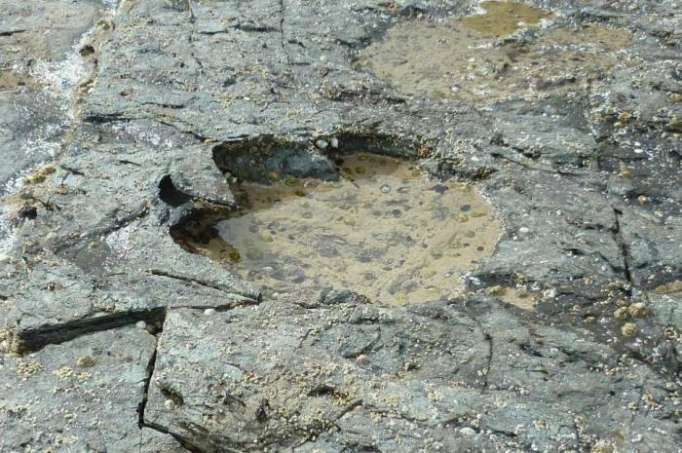Dozens of the 170 million-year-old fossils, belonging to early sauropods, have been unearthed in a muddy lagoon on the Isle of Skye.
Sauropods grew to be at least 49ft (15 metres) long and weighed more than 10 tonnes. Footprints from theropods - the "older cousins" of Tyrannosaurus rex who stood at two meters tall - were also found.
They are thought to be the oldest dinosaur fossils ever found in Scotland. Another set of footprints were also found on Skye in 2015, but are slightly younger and slightly smaller.
Geologists say the new finds are important as evidence from the Middle Jurassic period is rare, and few such fossil sites have been found around the world.
The discovery adds to growing evidence the prehistoric reptiles were widespread on Skye at a pivotal time in their evolution.
It also shows many dinosaurs, far from being restricted to the land, often lived near water and would wade through ancient lagoons to find food.
Dr Steve Brusatte of Edinburgh University said: "It's important because it's a large site for dinosaur tracks, those are pretty hard to find.
"It shows both long-necked and meat-eaters were on the same site at the same time living together, side-by-side.
"It captures a moment in time 170 million years ago when they were just hanging out in a lagoon, living on the beach, back when Scotland was much warmer and dinosaurs were beginning their march to global dominance.”
"Their long-necked prints are almost car tyre size whereas the meat-eater ones are about the size of a basket ball."
Dr Brusatte added: “The more we look on the Isle of Skye, the more dinosaur footprints we find.
The Telegraph
More about: dinosaur















































